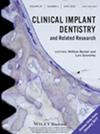Accuracy of Anterior Immediate Versus Delayed Implant Placement With an Autonomous Robotic System: A Retrospective Study
Abstract
Objective
This study aimed to compare the accuracy of an autonomous robotic system for anterior immediate and delayed implant placement.
Methods
This retrospective study included patients who underwent anterior dental implant surgery from September 2022 to March 2025 using an autonomous robotic system. Osteotomies performed with the autonomous robotic system in this study were modified by using precision and side-cutting drills, along with repeated lifting of drills to minimize deviations. Linear and angular deviations in two- and three-dimensional space were assessed by matching preoperative planning with postoperative cone beam computed tomography. Postoperative pain and surgical satisfaction were recorded using a 100-mm visual analog scale. The Shapiro–Wilk test, Student's t-test, Mann–Whitney U-test, Pearson's Chi-Square test, and Fisher's exact test were used, and p < 0.05 was considered statistically significant.
Results
This retrospective study included 53 patients (65 implants) who underwent anterior dental implant surgery with the autonomous robotic system (immediate implant placement group: 19 patients, 21 implants; delayed implant placement group: 34 patients, 44 implants). Comparison of deviations in immediate and delayed implantation using the autonomous robotic system showed a mean (± SD) coronal deviation of 0.57 ± 0.19 mm versus 0.49 ± 0.20 mm (p = 0.129), a mean apical deviation of 0.57 ± 0.19 mm versus 0.52 ± 0.21 mm (p = 0.373), and a mean angular deviation of 0.53° ± 0.18° versus 0.61° ± 0.28° (p = 0.742). Postoperative pain and surgical satisfaction were not significantly different between the two groups (p > 0.05).
Conclusions
The autonomous robotic system demonstrated high and comparable accuracy in both anterior immediate and delayed implantation, with overall patient satisfaction. This could reduce the technical sensitivity of anterior immediate implant placement, enhance precision, and broaden the clinical applications of the autonomous robotic system.

 求助内容:
求助内容: 应助结果提醒方式:
应助结果提醒方式:


